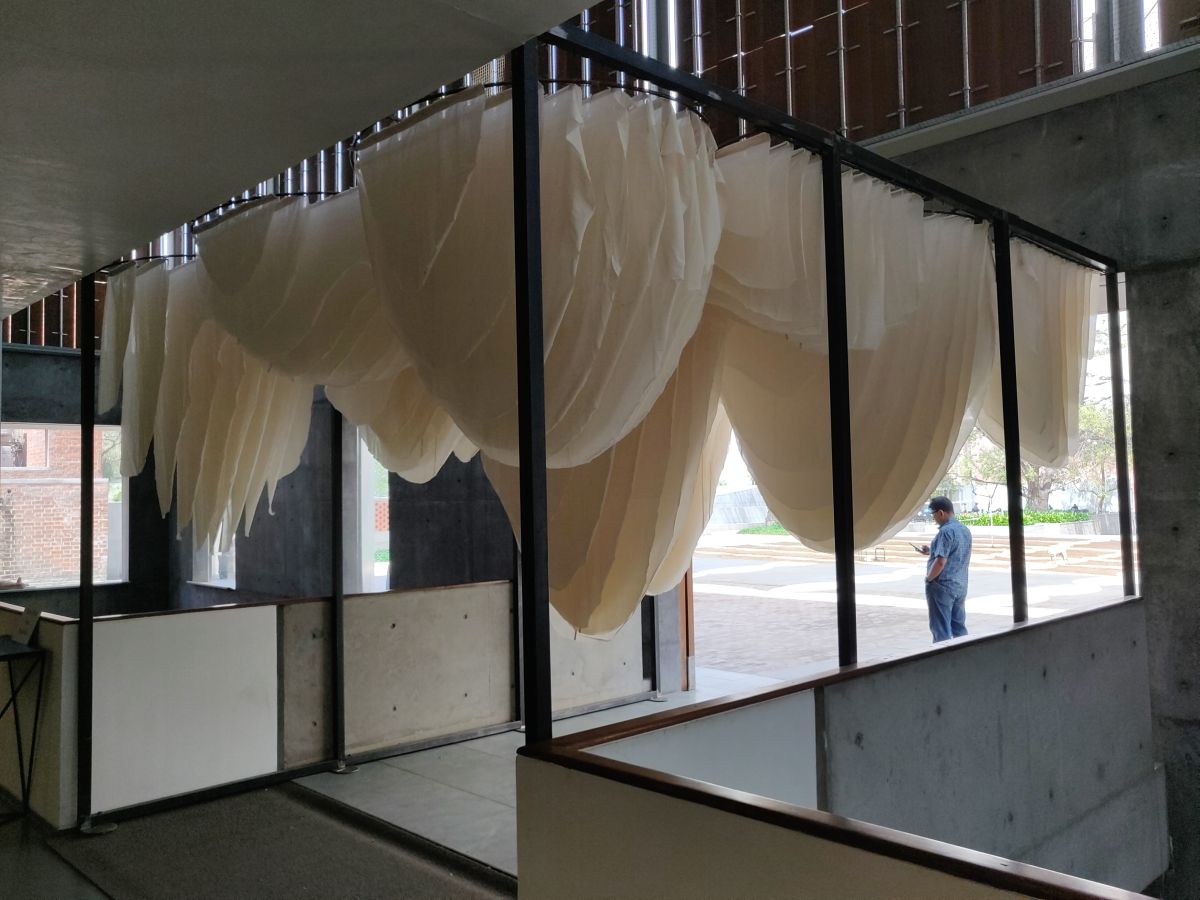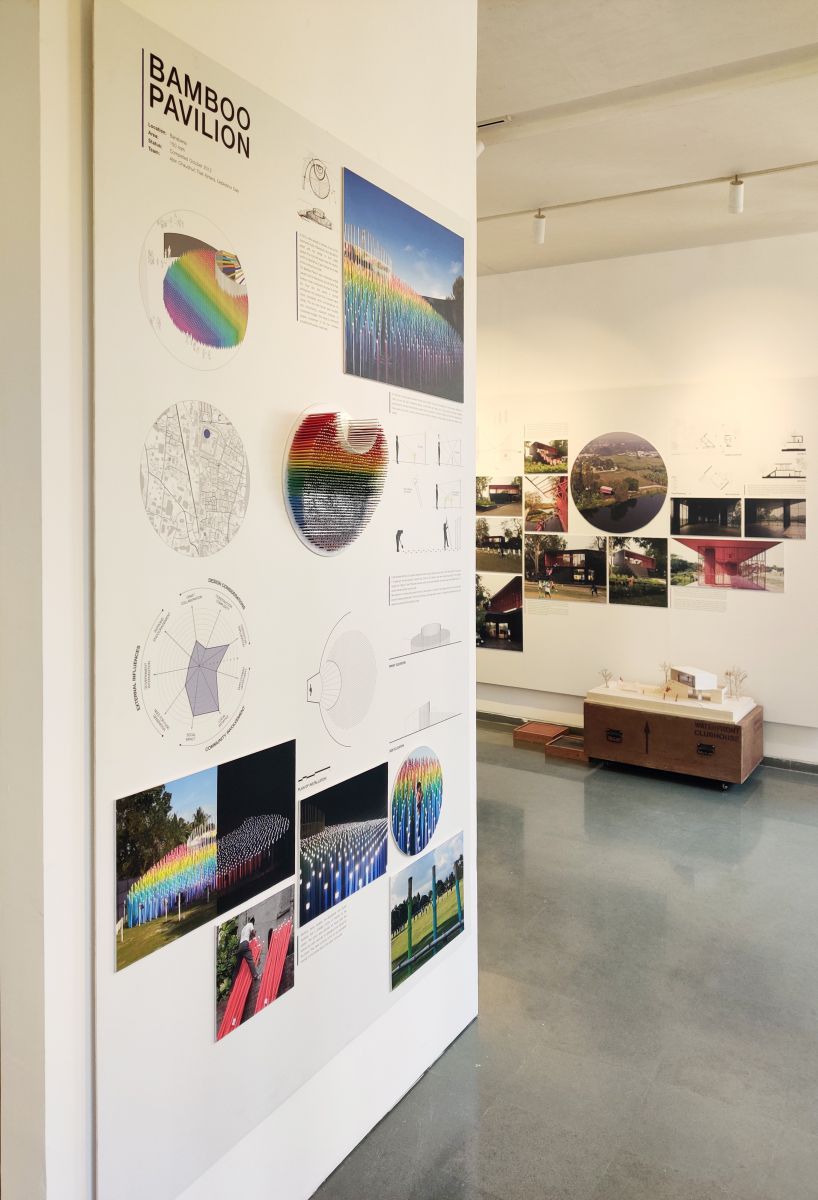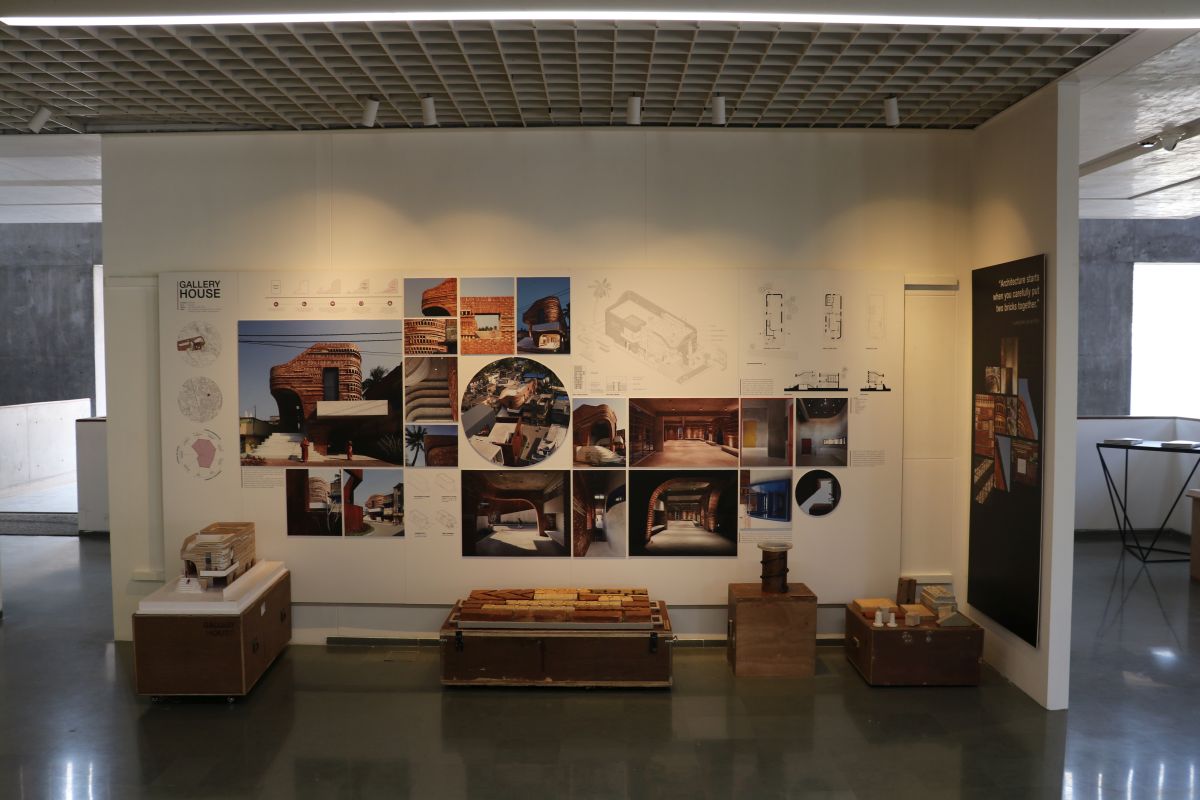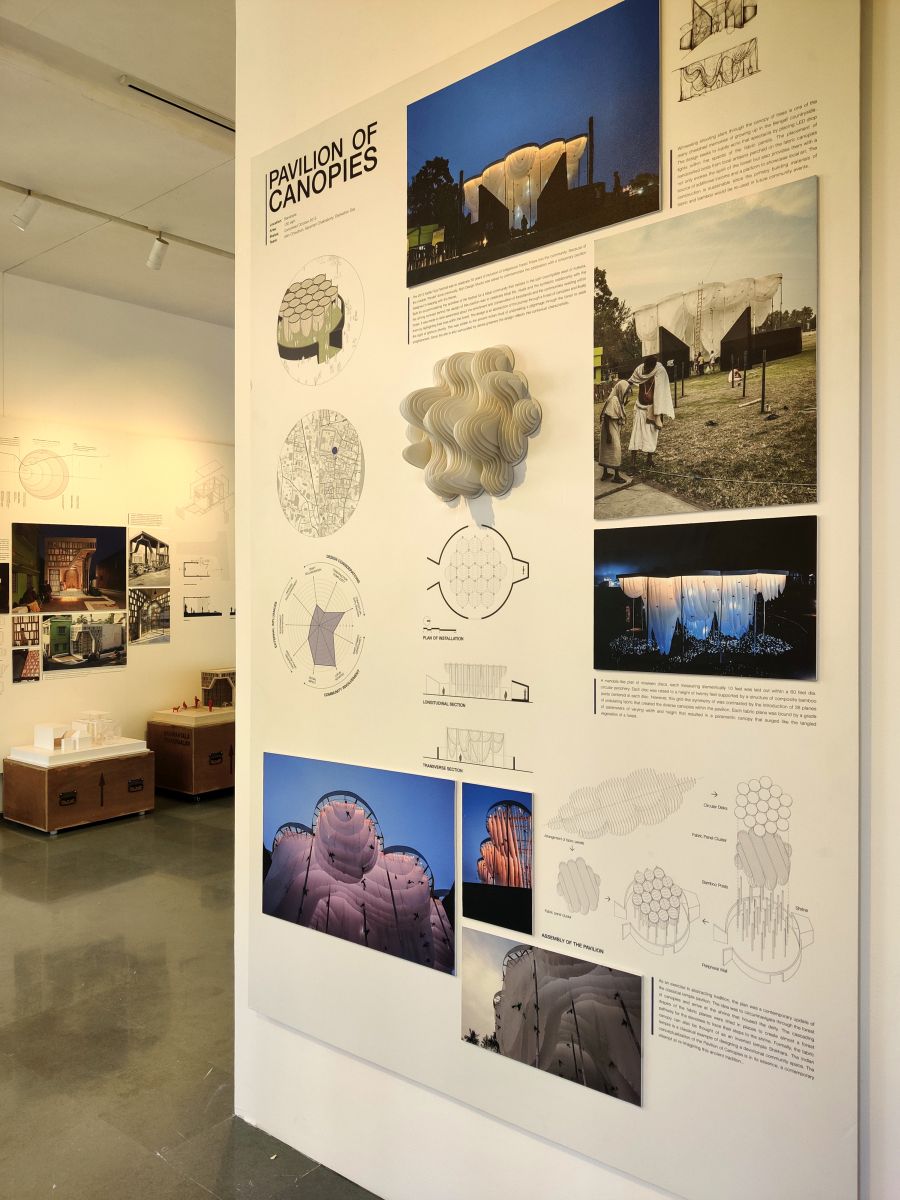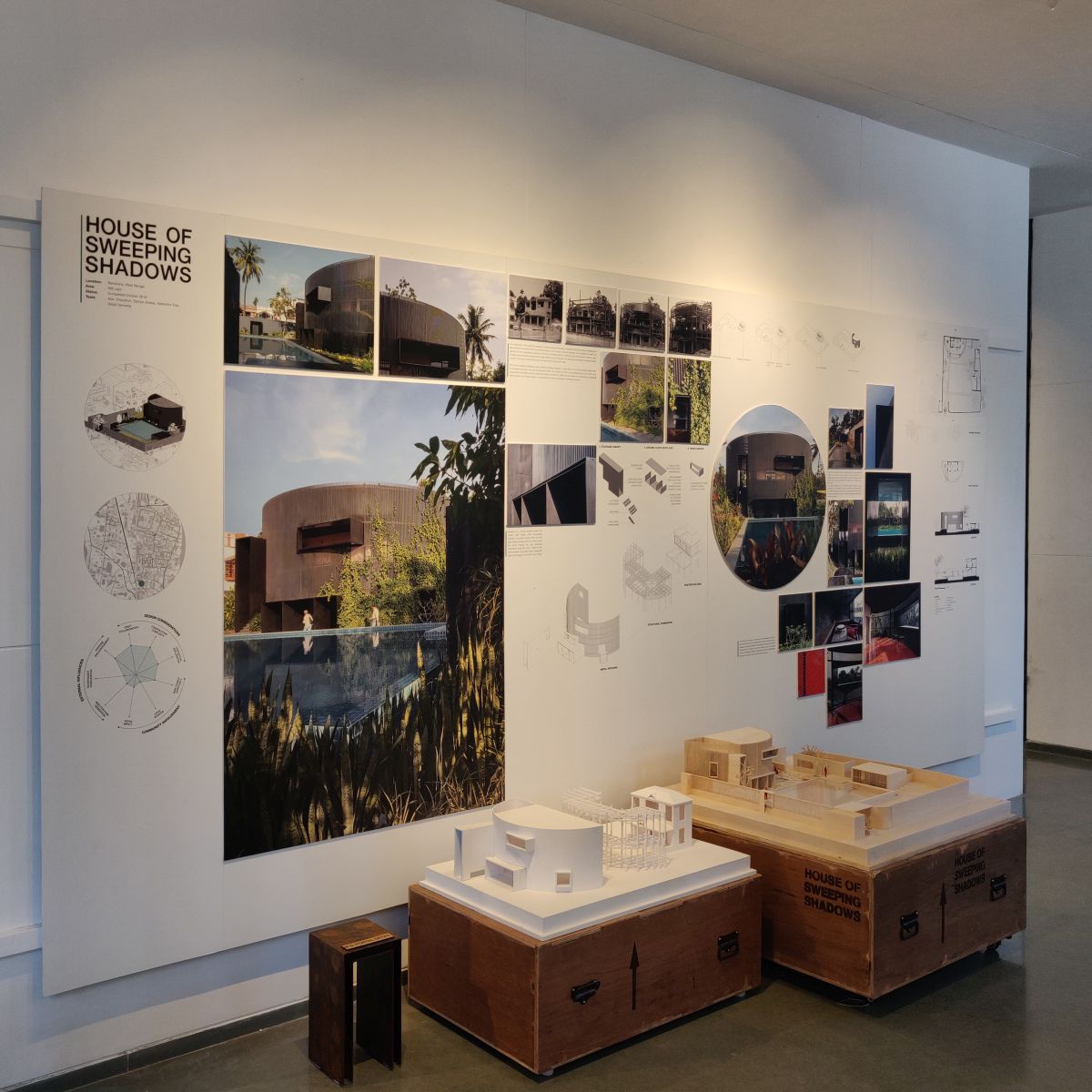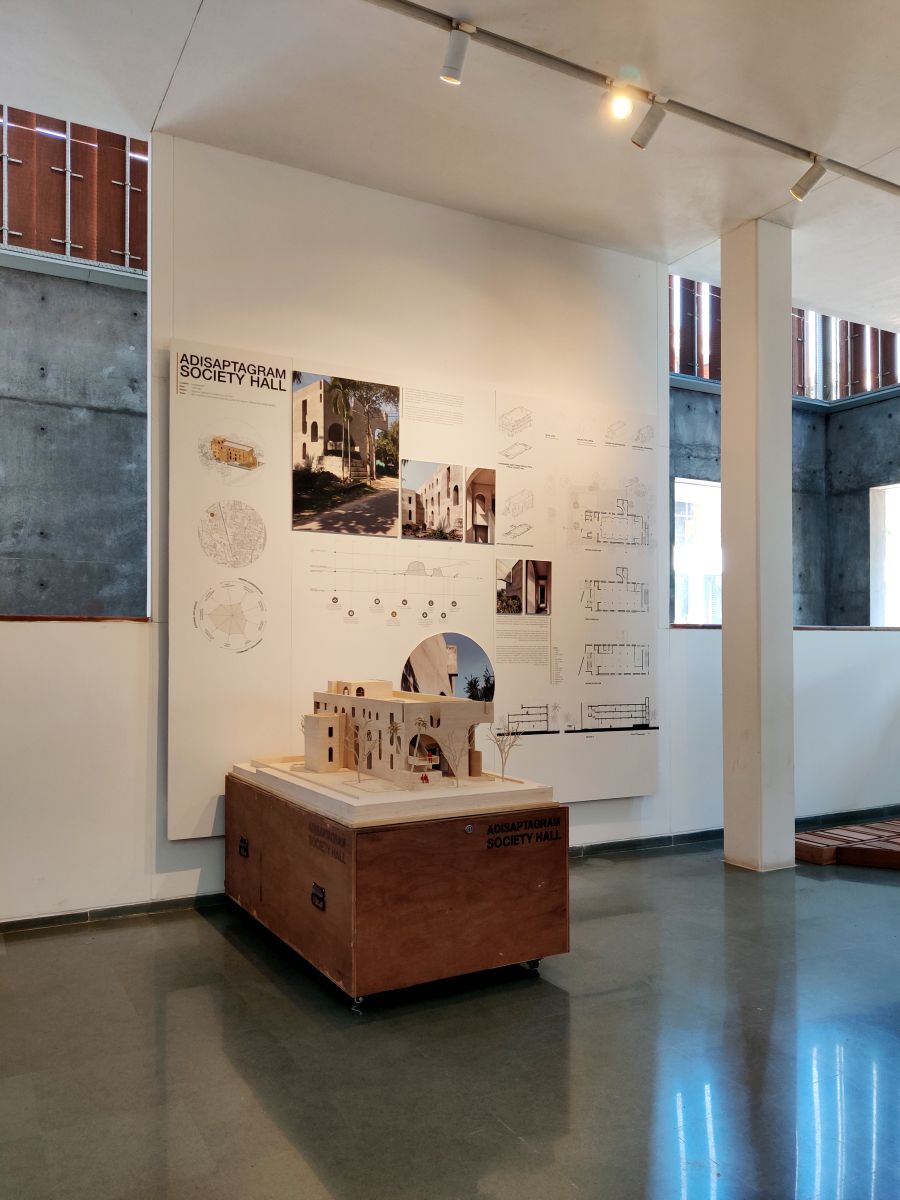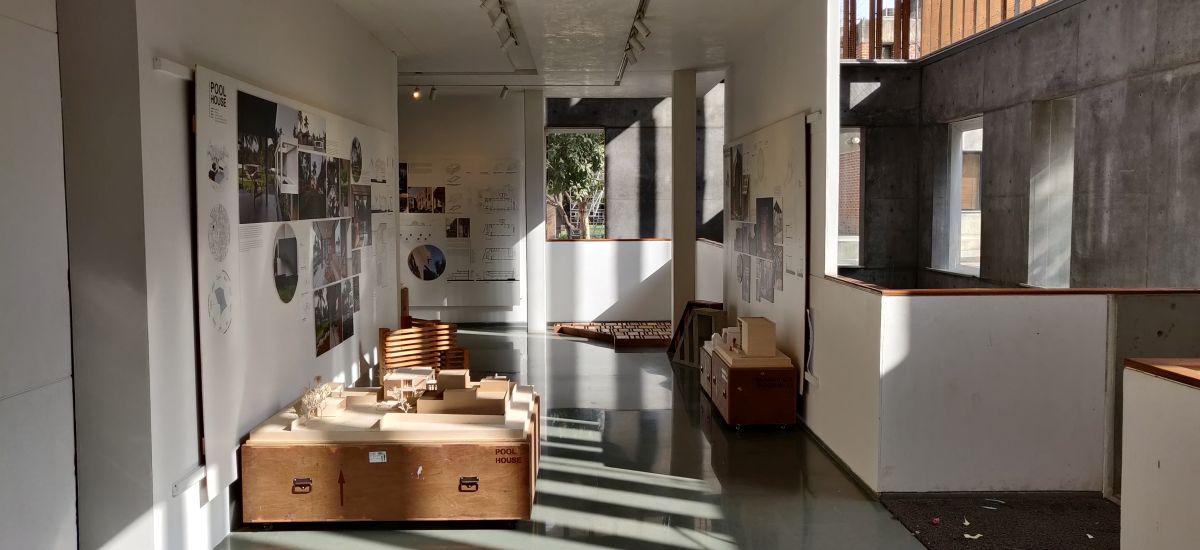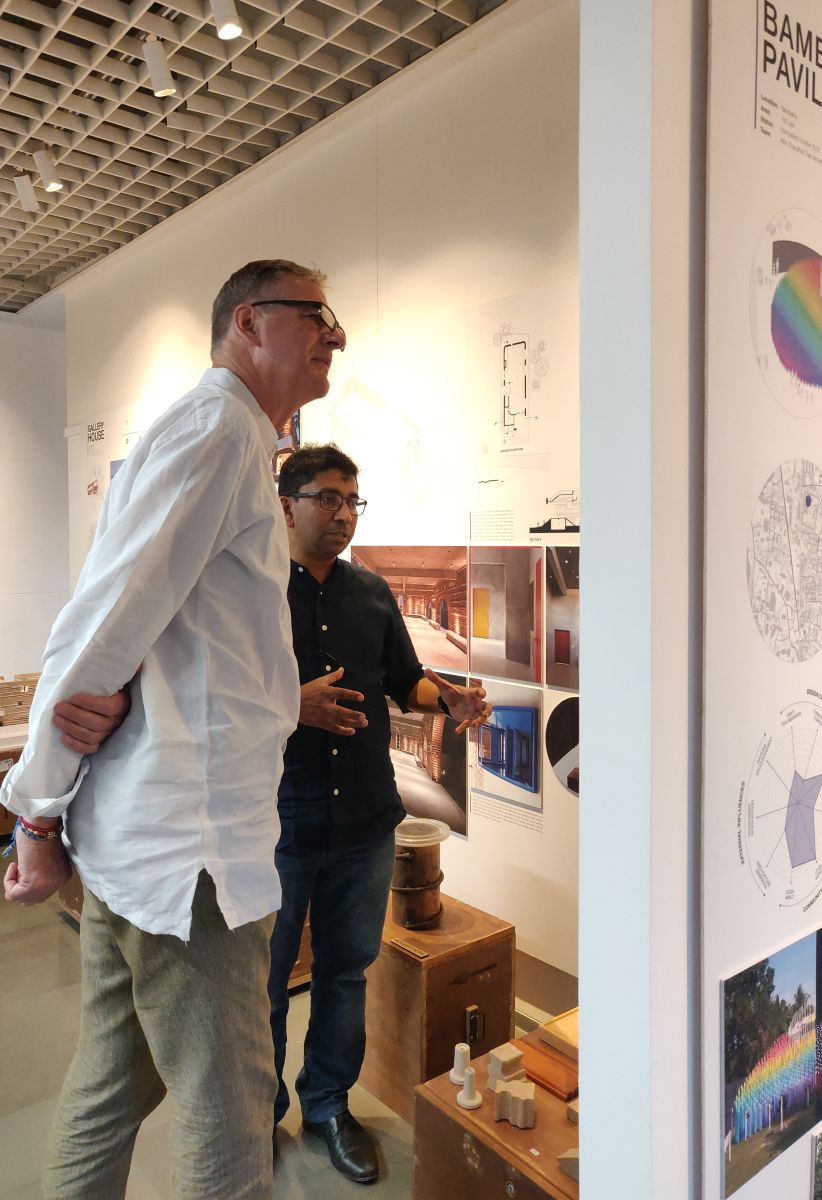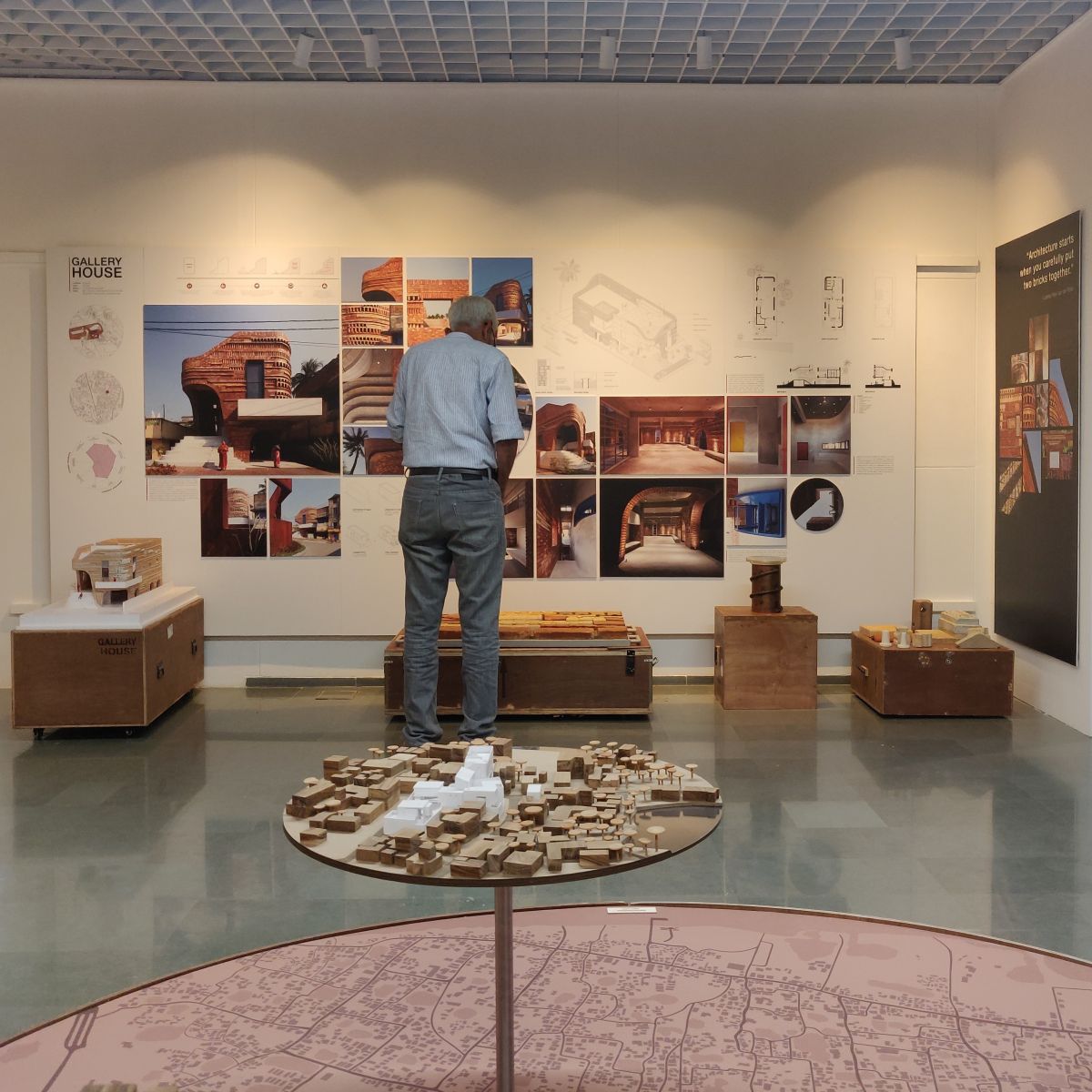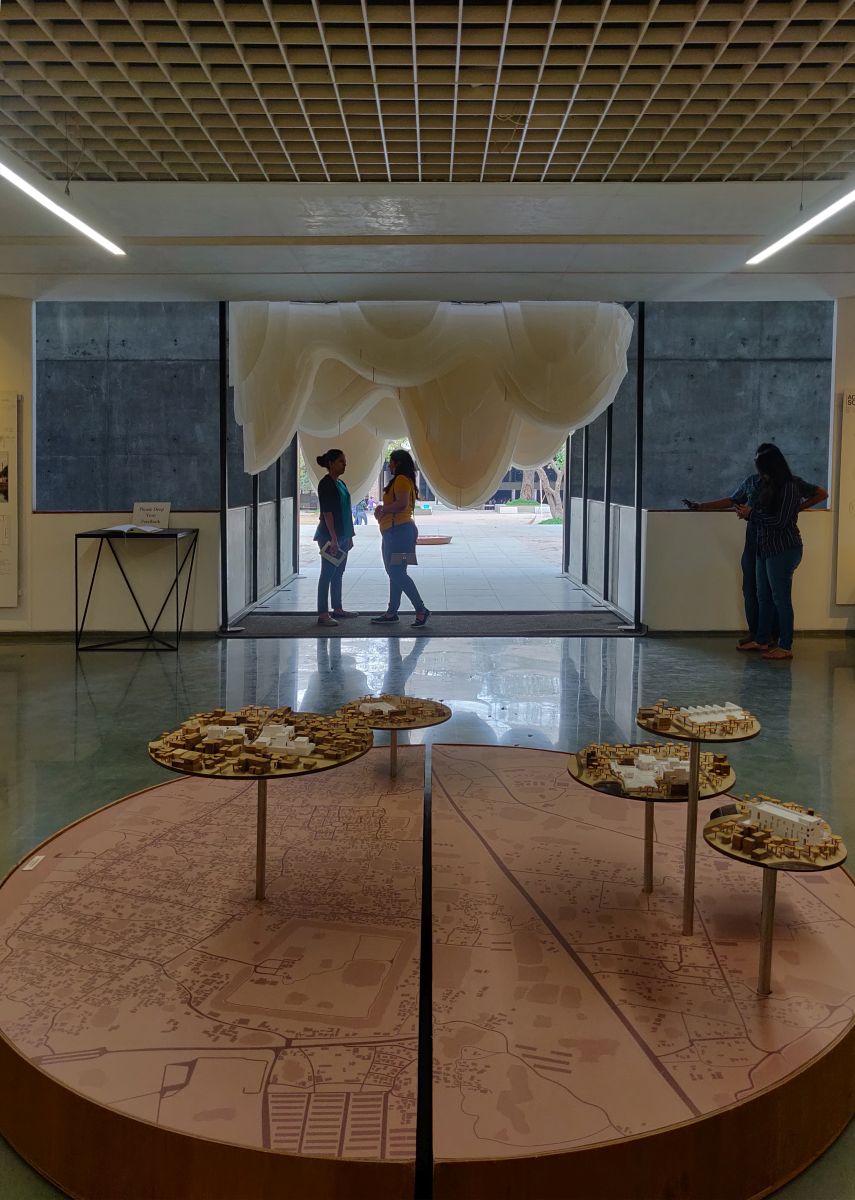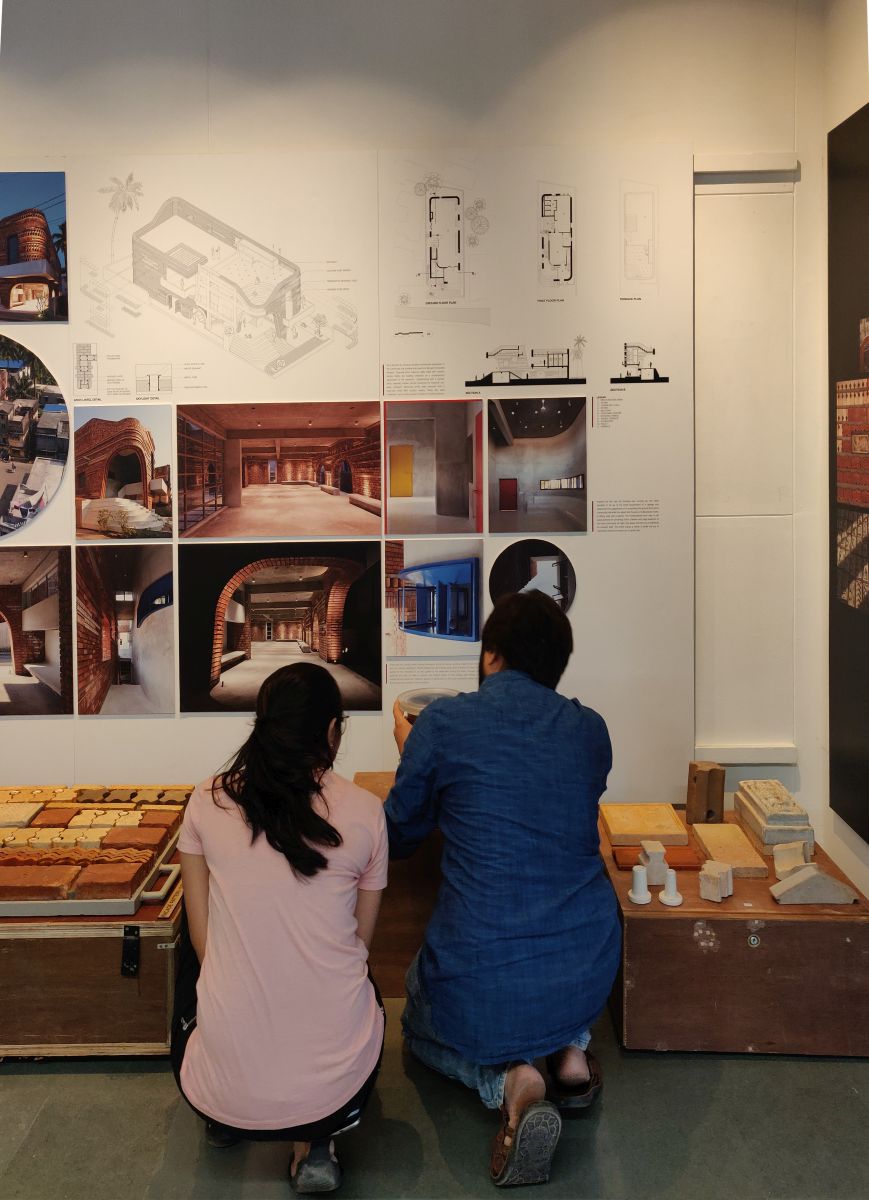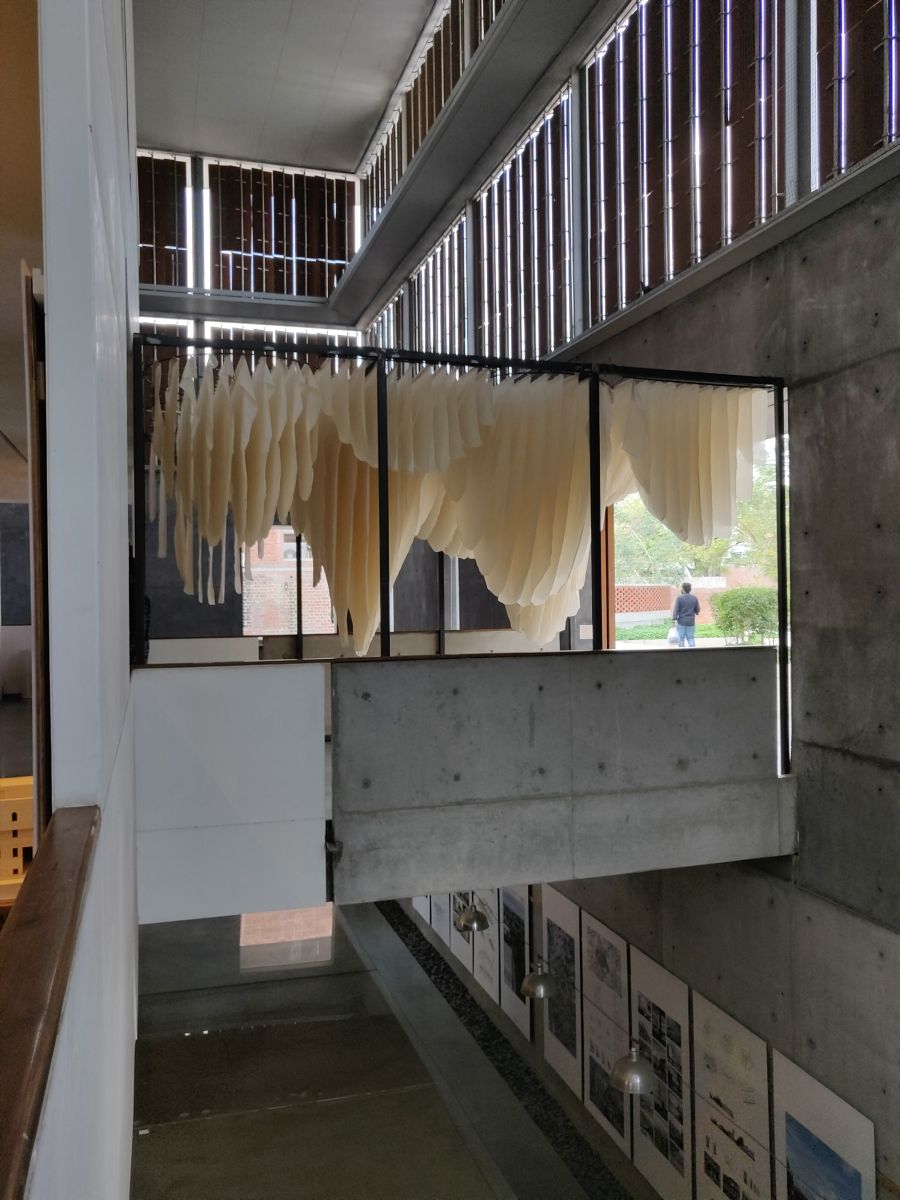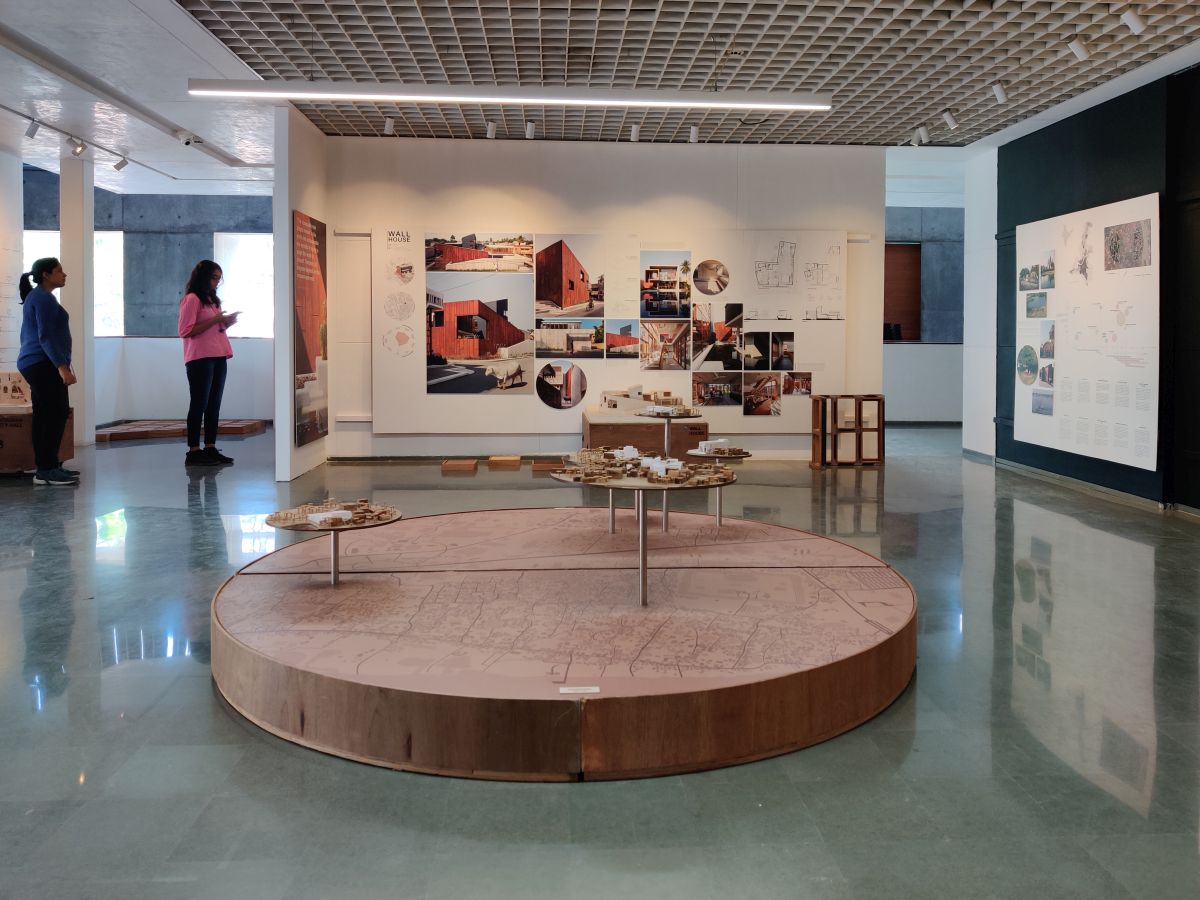An exhibition narrating a serendipitous sequence of events that comprise placemaking in small-town India; an ongoing story of how a tiny spark introduced an entire community to the power of design; demonstrating how architecture can expand its sphere of influence further than defining the visual and material culture of its immediate context. It showcases how design and technology are adapted to suit local constraints, and most importantly, celebrates the cohesive efforts of local influencers and the huge gamut of people involved in the successful realisation of peri-urban projects. Making of a Place presents Private, Public and Community-driven projects of multiple scales through the dual lens of intent and process.
—————
Located on the banks of the Hoogly, Bansberia is a municipality about 55 km north of Kolkata. Being born and brought up in this community, Ar Abin Chaudhuri is well versed with the inherent culture of this Bengali town. Inhabited by people that embrace festivities, celebrations and an unparalleled fanaticism for football as a way of life, it is no surprise that its citizens are a tight-knit social group. Hangseshwari Temple and Ananta Basudev Temple are historical icons that influence the socio-religious activities of this area. One of the largest festivals celebrated here is ‘Kartik Puja’, an annual event that brings in hundreds of thousands of people to see the temporary pavilions or ‘pandals’ erected by numerous local community clubs in honour of their deity.
1
Of Places and People
In 2012, while already a member of one of the community clubs in Bansberia, Abin decided to assist with the design of their yearly pavilion incorporating his professional expertise with the engagement of enthusiastic club members. It needed to be simple and easy, yet create an impact. Limited funds meant optimising the use of available resources and involving many helping hands. However, the most vital aspect was the intent to instil the importance of good design as an idea to the community at large.
Thus came about the Bamboo Pavilion, generating an immensely positive response from the locals and visitors alike. With the massive audiences, it attracted, this installation proved to be a great opportunity to initiate a large number of people to the idea of a designed space. It exposed the influence that architecture can have to one’s perception of space, its effect on one’s mood, and its ability to re-imagine convention.
Media exposure, while reinforcing the impact of the pavilion to its patrons, played a key role in the events to unfold thereafter. Impressed with the temporary pavilion built in the municipal grounds of Bansberia, the local Government in Kolkata wanted a similar permanent public installation for the beautification of a prominent junction along the main arterial road in a planned township in the city.
Bamboo Pavilion gained international recognition, several months after its dismantling, when the Museum of Modern Art, New York selected it for being showcased in their publication and travelling exhibition, ‘Uneven Growth, 2014’. It also received ‘The International Architecture Award, 2015’ from The Chicago Athenaeum. News of its global reach imbibed a heightened sense of pride to the community back home. Conversations started veering back to the Pandal as people started discussing their personal experiences at the internationally renowned, award-winning Pavilion. This in turn strengthened the idea of a space having the ability to affect its users physically and mentally.
2
Labour of Love
News of the accolades earned by the Bamboo Pavilion began circulating through the local grapevine to regions around Bansberia as well. Adisaptagram is one such town in the Hoogly district a couple of miles away. Upon learning about this news, Mr Das, owner of a few brick manufacturing units and a respected, influential person in the region, sought to approach an architect to build himself an extension for his home. Going against the norm of employing civil contractors and masons for any building works by appointing a design professional was, until then, something unheard of. Hearing about the neighbourhood boy running an architectural practice in the big city, he was encouraged to approach Abin Design Studio for their services.
Pool House, as it came to be known, was the first-of-its-kind consigned project in the vicinity. With initial inputs from the client, the suggested program comprising a swimming pool, gym, guesthouse and lawn for this residential extension spoke volumes about changing lifestyles in peri-urban areas. The client also found comfort in giving freedom to design with a modern outlook. What started as a casual social favour, ended as a sophisticated and complex manifestation of ADS’ expression.
The design explored subtleties of detailing that would work within the parameters and challenges of small towns while still providing a global outcome. The client took a great personal interest in the process for this project. From the dynamics of spaces to the articulation of materials, he found an overwhelming appreciation for the craft of architecture as well as the skill of the people involved in the making. He spent a lot of time in conversation with Abin to learn more which led to a profound friendship between the two. He also conversed with the local craftsmen employed at the site and attained an in-depth understanding of their contributions. The workforce was well looked after because of his respect for their craft.
The powerful and very human outcome of such treatment was felt strongly in this project. People wanted to work here and put in their best efforts as well. Pool House showcases exemplary finishing in spite of labour-intensive workmanship and complex detailing. It also brought to light the hidden talents of local craftsmen. A few stories surfaced where it was realised that had it not been for the opportune timing of this project, many of the worker’s talents would remain hidden and the trajectory of their lives’ would have taken a very different turn since some would even have resorted to joining local political gangs. The process behind the project had a lot to reveal about its human context.
3
Two Needs, One Deed
Inspired by the account of one of the woodworkers at the Pool House where his life transformed from being a political worker to a skilled craftsman, Abin felt a responsibility to do something for the local community.
It led to the idea of setting up a workshop and material research unit which would provide a backbone for explorative and execution works taken up by Abin Design Studio; a co-beneficial system that would provide support to the practice and stable employment to improve the livelihood of locals.
The Adisaptagram Workshop was thus established in Adisaptagram. Having been able to provide employment to 20 locals by the end of the first year, it proved to be a successful endeavour. ADS is currently in the process of a massive expansion of the workshop and hopes to provide job opportunities to more people by moving more of its back-end work off-site.
4
A Forest Enchanted
The 2015 Kartik Puja Festival was a theme to celebrate 50 years of inclusion of indigenous Forest Tribes into the community. Because of the notable Pandal done previously, Abin Design Studio was asked to commemorate the celebration with a temporary pavilion designed in keeping with the theme.
The Pavilion of Canopies was designed to allude to the symbiotic relationship of man with the forest while pursuing an agenda to promote sustainability and co-existence with nature. It also manifests a contemporary take on the mythical Indian pilgrimage to temples hidden in remote jungles.
The pavilion was received with much appreciation by the visitors along with specific observations referencing the play of volumes, the effect of lighting, and the abstracted adherence to the theme. There was a certain influence on the perceptions of the audience this time around and a marked paradigm shift in the approach of the community members towards understanding the concept behind the design, not just the physical installation itself.
5
Full Metal Jacket
While the Pool House was under construction, another resident from Bansberia happened to notice and be impressed by the work that was happening there. Looking to build an extension for his residence as well, he was motivated to approach ADS for professional help as well.
The House of Sweeping Shadows posed a different challenge altogether. A small shell of a two-storey building already stood on the plot in question. Conceived by the client’s father, the structure was built in the prevailing style by local masons as a composition of decorative columns supporting a pitched concrete roof. While the client wished for a contemporary recreational outhouse with a much larger program, he was reluctant to break this building for sentimental reasons.
The resulting complex, comprising a program very similar to that of Pool House, was a very different design expression to any precedents. The composition of masses, boldly crafted metal extension with the soft verdant landscape, and the dark hues complementing the open skies over the reflective water body made for a serene, contemporary extension to the client’s residence.
6
Turning a Corner
At a busy intersection in Bansberia were three adjacent plots that one gentleman had procured over time. Visiting the Pool House and House of Sweeping Shadows encouraged him to approach ADS for his private residence. The client’s prime requirement was that of a 12-foot tall boundary wall for ensuring privacy and security.
After due analysis of the corner plot for Wall House, it was observed that building a tall boundary wall along the road-adjacent periphery would prove disastrous for this collision-prone junction. Reluctant to give up the idea of a tall boundary wall, it took Abin a period to six months to reason with and convince the client to appreciate the difficulty of the situation. It was finally agreed upon for the wall to be taken in at the corner and enable clear sightlines around the turn. The space outside the wall was landscaped with low-height shrubbery as a vibrant enhancement of the pavement.
Minimal setbacks and an unavoidable boundary wall prompted the idea of integrating the wall into the design of the House itself. Enveloped within this strategically articulated feature wall, the house is designed as an inward-looking series of masses with internal courtyards to bring in light and ventilation to the harmonious sequence of spaces inside.
7
Club Culture
As a policy towards the promotion of sports and extra-curricular activities, Bengal’s state Government offered a sum of 2 lakh rupees to all state clubs and associations in early 2017. Football has always been an integral part of the cultural fabric of Bansberia. One of the local coaching clubs approached Abin Design Studio to build a clubhouse made especially to facilitate young passionate footballers in the area.
Excited to engage in a project for the people of the neighbourhood, ADS jumped in with both feet to develop the Waterfront Clubhouse. A working design and rationalised budget were arrived at after due consideration of constraints, manpower and resources with an outlook towards easy maintenance and upkeep in the future. A funding strategy was formulated to ignite interest amongst the local community and influential people in the area. The Studio requested their city-based associates to contribute raw material creating a material pool that kick-started the entire process. Collaborations with local builders and engineers further economised the venture.
The resulting clubhouse structure is now a symbol of culture and community recreation where children and adults alike come together to celebrate, collaborate and hone their athletic skills. It is a space that goes beyond its utilitarian identity to integrate all into an emerging public place. A philanthropic initiative by Abin Design Studio with support from benevolent community members, this project is a manifestation of the hope for a better future of a rural community in a developing nation. Assessment of this project goes beyond numbers and facts into the challenges it faces and how it addresses the contextual needs.
8
Double Take
Another association came in the form of a collaboration with the region’s Panchayat. As is the Government’s convention, a budget of 2.5 crores was allotted for the construction of an auditorium in Adisaptagram for private and public events. Planned to be built in the typical format of Government convention hall, the local councillor was insistent that they could do better than a cookie-cutter ‘decorative’ facade and really add functional and aesthetic value with a contemporary approach.
This Adisaptagram Society Hall came with a lot of constraints from the governing bodies. With the intent of reaching out to a people at large, Abin Design Studio took up the project embracing all the conditions set forth. The building had to be devised with minimal changes to the existing footprint, it was to be built by a contractor whose primary expertise was in the construction of road-side municipal drains, it needed to be within the specified budget with no room to overshoot, and in accordance with unnecessary bureaucracy, red tape, and impractical protocols.
ADS came up with various architectural solutions that explored better spatial arrangements without deviating too much from the original footprint, designing simple yet effective details that could be carried out by an inexperienced contractor. The use of local materials and methods was proposed that would work within the budget even if it meant providing their professional services pro-bono. Scheduled to be completed by mid-2020, the design hopes to invoke a sense of appreciation for architecture to the community and a notion that there is always room to improve from conventional presets. While the Government does take responsibility to provide infrastructure, as a community if we take up the initiative, we can play a significant role in enhancing our experiences.
9
Gods of Men
On the other side of the intersection from the Wall House is a ‘Thakur Dalan’, a permanently covered podium reserved for frequent rituals of various deities and focal venue of religious festivals. During the construction of the residence, the patrons of the trust that maintains this pavilion approached Abin Design Studio for effective intervention.
For the conception of Narayantala Thakurdalan, the relationship of the people with the place was observed over a span of several weeks. How some people would offer their prayers twice a day while many visited only occasionally. A few devotees spent considerable amounts of time offering obeisance while others simply bowed their heads from their cycles as they rode past. This place of worship played a different role in each person’s daily life and this provided cues for the design of the space.
Although the existing structure held immense sentimental value to the people of Bansberia, they were quick to take on ADS’s suggestion to rebuild completely when they saw how the new proposal respected the same idea and sentiment of the place. Seed money was provided by influential clients and funds were collected from members of the community to inculcate a sense of belonging and ownership. The studio also contributed to the project while putting the ADS Workshop to good use.
While the final outcome was well appreciated by the community, it must be noted that some feedback was received where it was felt that the previous structure, having had a long-term association with the members, seemed more ‘at home’ than the new one.
10
One Step Further
Meanwhile, the client of Wall House procured another parcel of land across the street from his home as a parking lot for his vehicles. ADS was initially approached to provide for a garage structure but convinced the client to use this opportunity for doing a lot more and think of how it could give back to the community.
The Gallery House was thus planned as a garage on the ground level with a multi-purpose activity space on the upper level intended to be used by the neighbourhood. Encouraged to maximise the public utility of this building, its design was conceived to extend into the street, both visually and physically. As a decision to introduce another architectural expression to the community, the building took cues from Bengal’s terracotta temples. Exposed brick masonry walls inlaid with ceramic blocks define the building character as a contemporary expression of the inspiration.
Inspired by the way the building was coming up, the client decided to let go of his initial requirement of a garage and embraced the suggestions of re-purposing the ground floor has a community hall while the upper floor houses a multipurpose-room, a sitting area and a pantry. The multipurpose-room was to be used primarily for providing tuition classes and yoga sessions to the local community. At night, this space functions as a dormitory for resident staff. The client enjoys a sense of pride and joy of ownership seeing the space put to good use.
This journey of realising multi-scale projects of both private and public nature, some even being driven by the members of the community, seems to reveal a dual narrative. One follows the architectural intent of bridging the gap between private and public through sensitised design, both metaphorically and functionally. It highlights how an architectural intervention, even in its isolated private realm, can include a community and make a difference. Another gives insight into the process followed in transforming an idea into a tangible reality. The people, trials, challenges, and adaptations involved show how certain key design features can be adapted to suit financial and working constraints without compromising on the desired effect, all because of an initial idea that rippled onto a wide spectrum of people and their perceptions.



